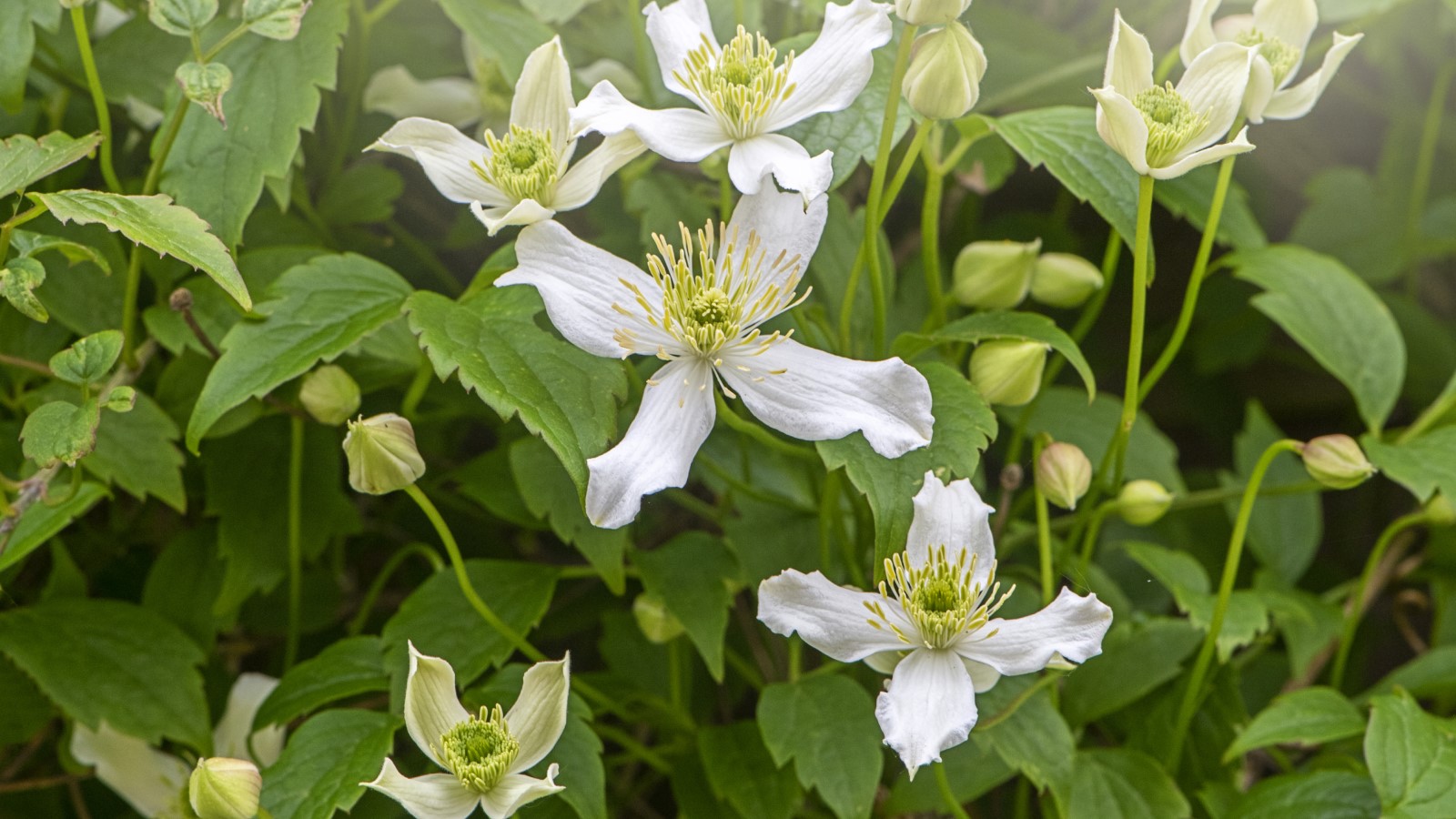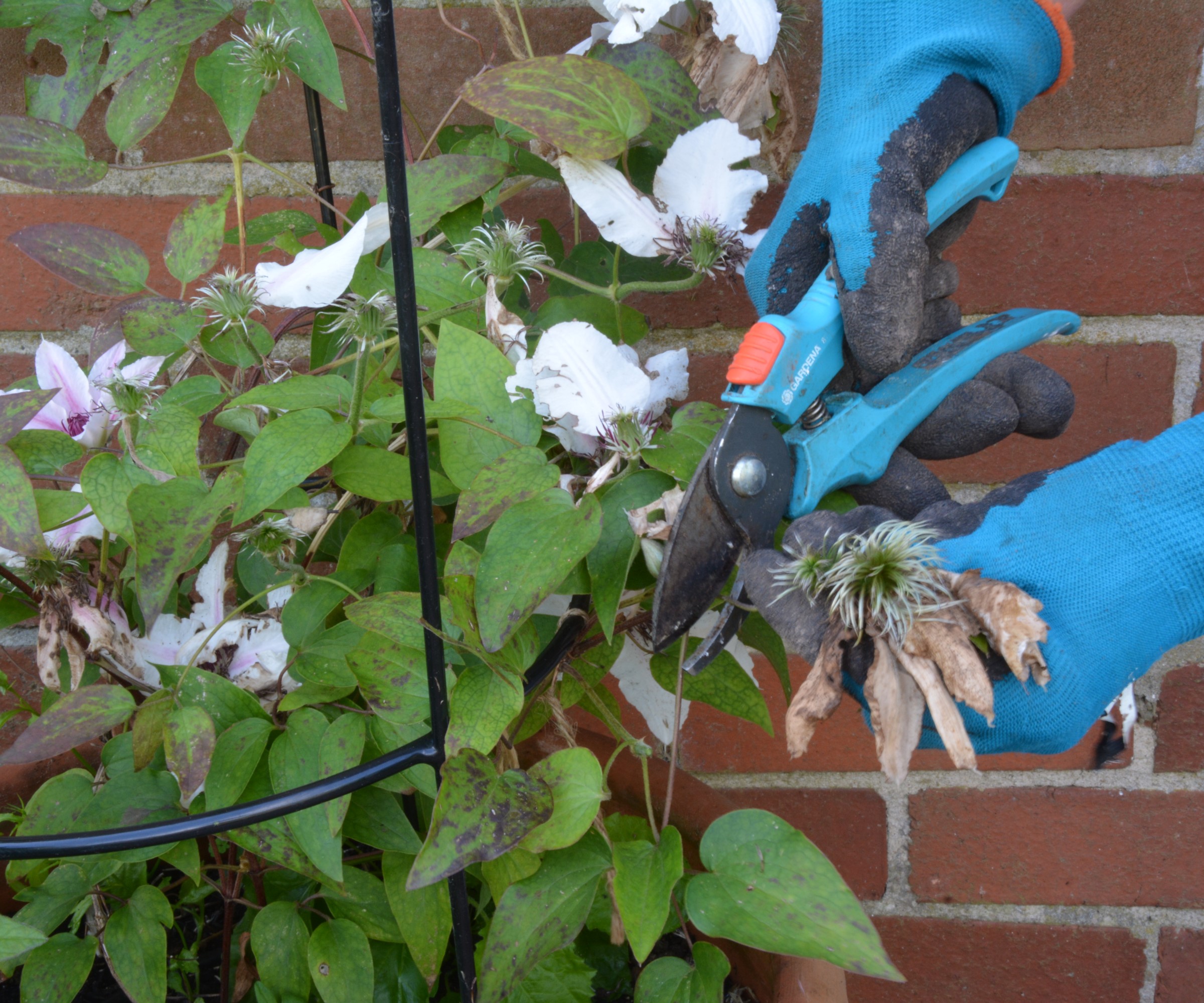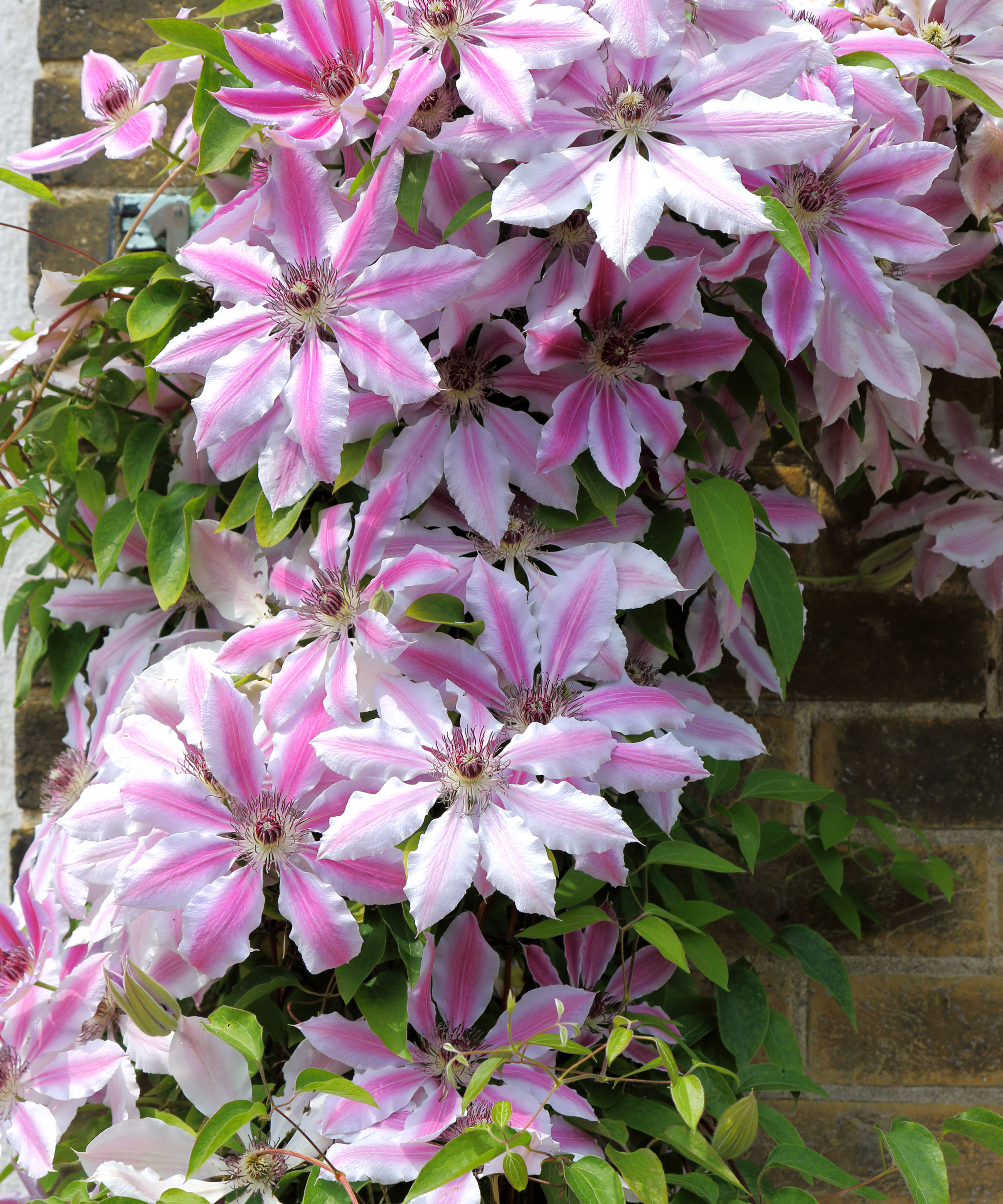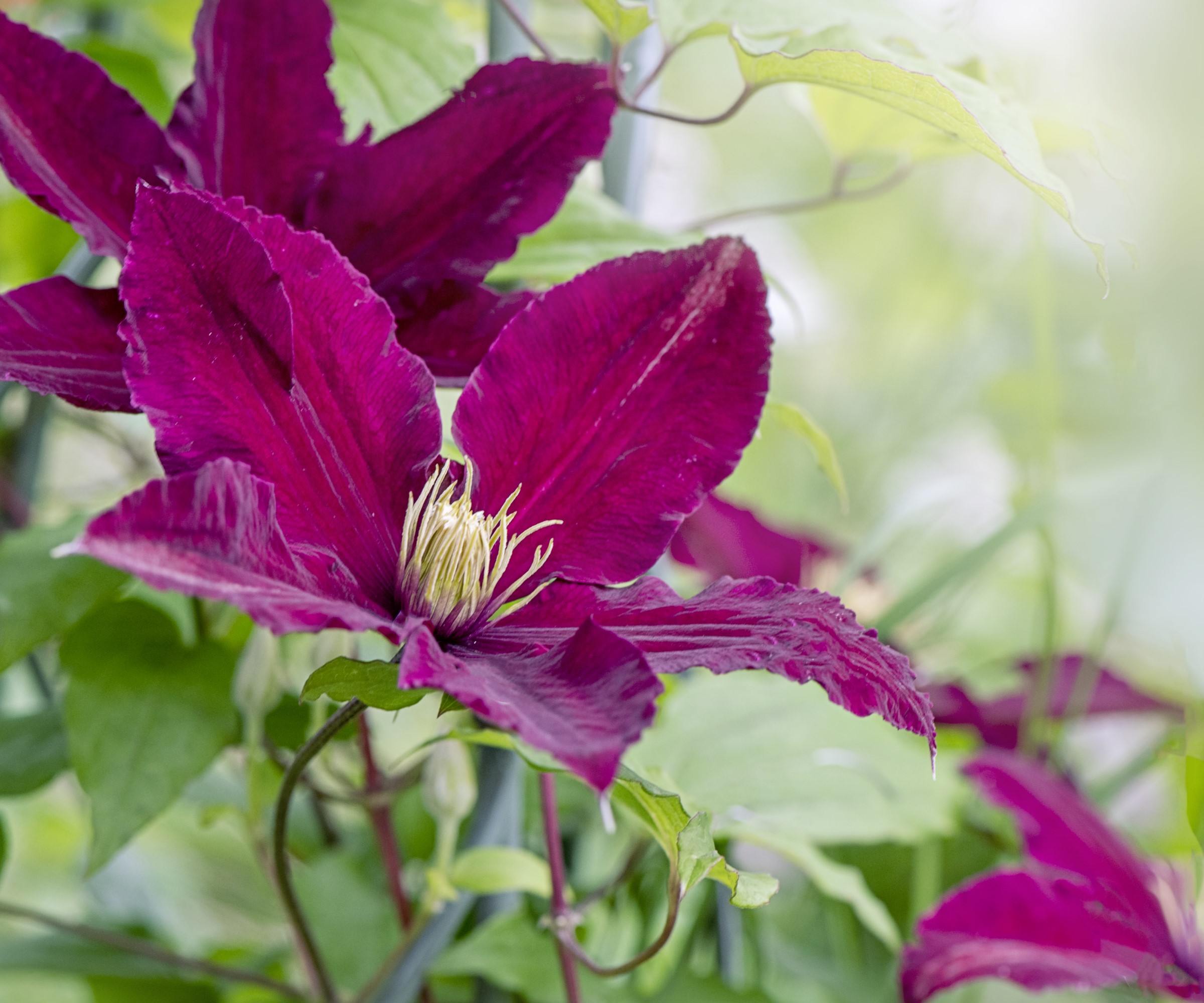
Q. I have an established clematis in my backyard that flowers prolifically in early summer and I have often wondered in recent years if I should be going out and regularly deadheading it. What's best for it?
A: Clematis are very popular climbing plants and certain varieties can be encouraged to put on a second flush of flowers by deadheading the early blooms. There is a wide range of clematis to grow and they can fill a space with color and scent, while their fast-growing speed can make them perfect for covering fences, arches or trellises.
When growing clematis it is vital to know which of the three groups yours fits into. Their traits will dictate certain important factors when it comes to how you care for the plant, including when and how you deadhead. In particular, it is the early large flowering group two types of clematis that can give you a second set of blooms by deadheading.

Should you deadhead clematis?
Deadheading is not often seen as a crucial, nor integral, part of caring for clematis. However, it is advisable as deadheading a clematis offers many positives to the plant and all the best clematis can benefit from this simple task.
It can produce a flush of new blooms and growth later on in the season and also rejuvenate the plant. It is the early-flowering varieties of clematis that benefit most, as deadheading encourages that flush of new blooms that will sparkle in your backyard throughout the summer.
When it comes to any deadheading or pruning clematis, it is important to know what category your clematis is in. Varieties of clematis are grouped into three categories, depending on when they flower, how they grow, and when they should be pruned.
Different clematis bloom on different wood, for example Group 1, or the early flowering species, produces blooms on last year’s wood and tend to require little in the form of pruning bar snipping off spent flowers. Group 2 flowers on shoots coming off last year’s growth – and can flower again a second time on new shoots after being deadheaded. Group 3 flowers are known as late flowering clematis and bloom at the end of the current year’s growth.
As deadheading is primarily recommended for early flowering clematis, like those in Group 2, it pays to know your types before heading out with any tools. As a whole, knowing your clematis group is advised, as pruning at the wrong time is a common pruning mistake and it will impact on the overall flowering of the plant.

Ruth Hayes, plant expert for Homes & Gardens, has the following guidance for when you should get out the pruning shears to deadhead clematis, depending on which of the three groups they are in.
- Group 1: These flower in winter, spring and early summer and need very little pruning. Deadhead with shears and cut back any stray shoots that are outgrowing their spot
- Group 2: These are the varieties that produce large flowers in early summer. Deadhead after flowering, then leave unpruned until late winter
- Group 3: Flower in midsummer. Deadhead then cut them back in late winter.
Even if it will not encourage a second flush of flowers, deadheading clematis can help to neaten the overall appearance of the flowering climbers and also promote new growth. Therefore, deadheading is recommended for all types of clematis, no matter how or why you are growing them, whether you are growing clematis in pots or as a climbing plant to create privacy or shade.

How to deadhead clematis
When heading out into the backyard to deadhead clematis, you need only a few garden tools to complete this simple task. Use a pair of clean and sharp pruning shears or garden shears to deadhead clematis, as sharp tools ensure a better cut and reduce the risk of disease infecting the plant. Always clean garden tools after use to keep them in top working order and help to combat disease in the garden.
Identify any spent clematis blooms and follow them back down the stem. Take your shears and snip off the faded flowers along with a section of stem. As with any other deadheading, including deadheading roses and deadheading dahlias, always prune back to above a set of healthy leaves. Don’t be afraid to pick a spot far back along the stem, as you can remove up to 12-18 inches of plant material when deadheading clematis. Take care not to damage any new growth or any other buds.
If you are deadheading Group 1 clematis, it is a bit different as you simply use your shears to give the plant an overall tidy and remove spent flowers. An example of the type of garden shears for this task is the TRAMITEC Garden Hedge Shears available at Amazon.
Ruth Hayes recommends that, as well as deadheading, you can further increase the chance of another set of blooms by also completing a second essential task. She says: ‘Deadhead and feed early summer clematis and you may get a second flush.’ Using a high potassium fertilizer, such as a feed used for growing tomatoes, will help to promote that second set of flowers. One example of such a tomato food is the Espoma Organic Tomato-Tone feed available at Walmart.
Clematis come in a variety of flower sizes, colors, and shapes, the range on offer means there is a clematis for any situation. If you do wonder whether you should deadhead your clematis, the answer is a resounding yes. Not only can it be a quick and simple task, but the rewards it offers makes it worthwhile. Especially if you have an early-flowering clematis and could potentially get a second round of beautiful blooms in the summer.







